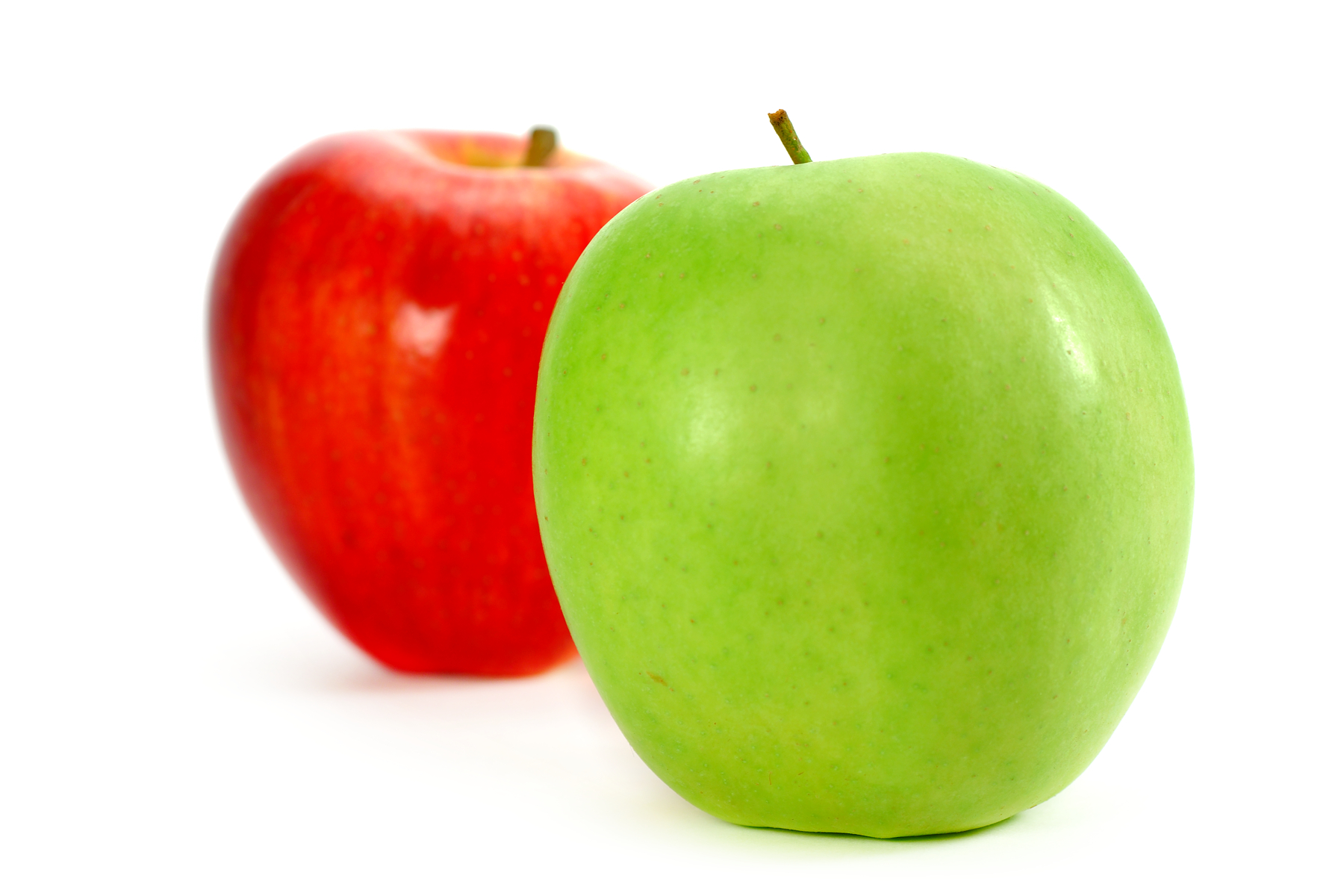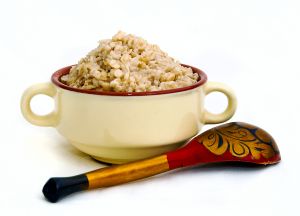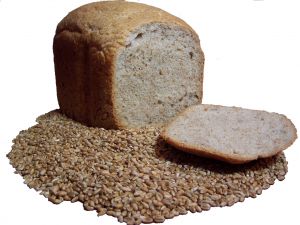
Everyone is talking about fiber! We are inundated with “high fiber” and “whole grain” claims every time we walk into a supermarket or turn on a television. We can even buy powdered fiber supplements. But should we? Are we getting enough fiber in our diet? What is a whole grain anyway?
What is Fiber?

Fiber is actually the cell wall of edible plants. It is the indigestible portion of plant foods that passes through our digestive tract without being absorbed. There are actually two kinds of fiber – soluble fiber and insoluble fiber.
Soluble fiber can be dissolved in water and as it passes through our digestive tract it absorbs water, making us feel fuller and contributing to weight loss.
Insoluble fiber can not be dissolved. It passes through our digestive tract without changing form at all. It is mostly used to improve the quality of bowel movements.
Why is Fiber so Important?
We all know that fiber is important for our bowel health – having enough fiber in your diet keeps you regular and can prevent both constipation and diarrhea. But there is so much more to fiber than just regular bowel movements!
Adequate amounts of dietary fiber have been shown to prevent the development of many health conditions including:
- Diabetes

- Osteoarthritis
- Heart disease
- Cancer
- Hemmorhoids
- Varicose veins
- Gout
- Gallstones
- Kidney stones
- Obesity
- High blood pressure
- Appendicitis
- Diverticulitis
- Irritable bowel syndrome
- Crohn’s disease
- Ulcerative colitis
Fiber has many actions in our bodies, all of which contribute to good health. Fiber from food can:
- Decrease intestinal transit time (prevent food from staying too long in our digestive tract)
- Decrease high blood sugar levels after eating
- Increase sense of fullness
- Increase weight and volume of stools
- Improve bacterial flora in the digestive tract
- Increase production of short-chain fatty acids
- Lower cholesterol
Some of these actions may not seem like much, but they all add up to a pretty powerful impact in our body. For example, decreased intestinal transit time means there is less time for food to sit in our digestive tract, potentially exposing our intestinal flora to various compounds, both natural and synthetic, that may be converted to potential carcinogens.
Treatment of Health Conditions with Fiber

Not only can fiber decrease the incidence of many diseases, but it can be used to treat them as well. Fiber can be used to normalize cholesterol levels, improve blood glucose and insulin sensitivity, correct dysbiosis, promote weight loss, eliminate irritable bowel symptoms, and help manage symptoms of Crohn’s disease, colitis and diverticulitis.
Different fibers have different impacts, and a consultation with a Naturopathic Doctor can ensure that you are getting enough soluble or insoluble fiber for your personal health needs. Obtaining adequate fiber from your diet is the best way to get a combination of soluble and insoluble fiber and positively impact your health.
Dietary Sources of Fiber
Fiber is found in all plant-based foods in varying amounts. Consuming a diet rich in unprocessed fruits, vegetables and whole grains (entire grain is present – not ground into flour or processed to remove the bran) is a surefire way to increase your dietary fiber.
In general, we all need between 25-35g of fiber per day. Track your fiber intake for a week to see if you are getting enough fiber in your diet.
| Dietary Sources of Fiber | |
| Legumes and Nuts (1 cup portion) | Dietary fiber (grams) |
| Baked beans |
20.7 |
| Black beans |
12.7 |
| Chickpeas |
12.5 |
| Kidney beans |
12.3 |
| Navy beans |
11.6 |
| Lima beans |
9.0 |
| Lentils |
8.9 |
| Split peas |
6.0 |
| Peanut butter (2 Tbsp) |
2.1 |
| Cereals, Ready to Eat (1/2 cup portion) | |
| Bran Buds + Psyllium |
16.6 |
| Fibre 1 |
12.9 |
| 100% Bran |
12.0 |
| All Bran |
11.8 |
| Grape Nuts |
6.0 |
| Bran Flakes |
4.5 |
| Fruit & Fibre Dates & Raisins |
4.2 |
| Wheetabix (2 biscuits) |
3.8 |
| Raisin Bran |
3.4 |
| Corn Bran |
3.2 |
| Shredded Wheat ‘n Bran |
3.2 |
| Shreddies |
3.1 |
| Frosted Mini Wheats |
2.4 |
| Hot Cereals (dry, 1/3 cup) | |
| Oat bran |
5 |
| Oatmeal |
3 |
| Bread and Pasta Products (1/2 cup cooked or one slice) | |
| Whole wheat pita |
4.8 |
| High-fibre bread (varies) |
4-5 |
| Barley, pearled |
3.0 |
| Whole wheat pasta |
2.4 |
| Whole wheat bread (generic) |
2.0 |
| Dark rye bread |
2.0 |
| Brown Rice |
1.5 |
| Wild Rice |
1.5 |
| Dietary Sources of Fiber | |
| Fruits (1/2 cup) | Dietary fiber (grams) |
| Dried figs (4) |
6.6 |
| Pear (1) |
5.1 |
| Mango (1) |
4.0 |
| Blackberries |
3.8 |
| Raspberries |
3.4 |
| Raisins |
3.2 |
| Dried dates (4) |
2.8 |
| Papaya (1/2) |
2.7 |
| Dried apricots (4) |
2.6 |
| Apple (1) |
2.6 |
| Kiwifruit (1) |
2.6 |
| Rhubarb |
2.5 |
| Orange (1) |
2.4 |
| Vegetables (1/2 cup or one medium) | |
| Artichoke |
4.8 |
| Baked Potato + skin |
4.6 |
| Corn on the cob |
4.5 |
| Peas |
3.7 |
| Brussels sprouts |
3.0 |
| Broccoli |
2.7 |
| Parsnips |
2.7 |
| Spinach, cooked |
2.6 |
| Carrots |
2.2 |
| Beet greens, cooked |
2.2 |
| Green Beans |
2.1 |
| Eggplant |
1.3 |
Quick Tips to Increase Your Fiber

- Eat your fruits and veggies! If you are eating 8-10 servings a day you are well on your way to getting enough dietary fiber.
- Go meatless. Just one meat-free meal per day, full of beans, peas and/ or lentils can increase your daily intake of fiber.
- Don’t drink your fruit. Juice contains no fiber, so eat your fruit and drink water instead.
- Choose breads, cereals and pastas carefully. Select whole grain breads, cereals and pastas and look for ones with a minimum of 2 grams per serving. Try to consume grains in their unprocessed form more often – have rice, millet, amaranth or quinoa instead of pasta with your dinner.
- Add bran! Add a few tablespoons of bran to your favourite breakfast cereal for an added fiber boost every morning.
Fiber for All Ages
It’s not just adults who can benefit from more fiber. Start your children off with the best health and teach them to sustain it for a lifetime. Below are Health Canada’s guidelines for daily intake of fiber across the lifespan – are you and your family getting what you need?
| Age (years) | Males (grams/day) | Females (grams/day) |
| 1–3 |
19 |
19 |
| 4–8 |
25 |
25 |
| 9-13 |
31 |
26 |
| 14-18 |
38 |
25 |
| 19-50 |
38 |
25 |
| Over 50 |
30 |
21 |
| Pregnancy |
28 |
|
| Breastfeeding |
29 |
Disclaimer
The advice provided in this article is for informational purposes only. It is meant to augment and not replace consultation with a licensed health care provider. Consultation with a Naturopathic Doctor or other primary care provider is recommended for anyone suffering from a health problem.

